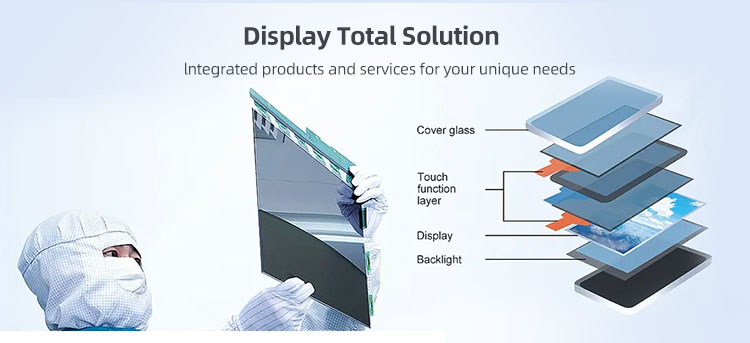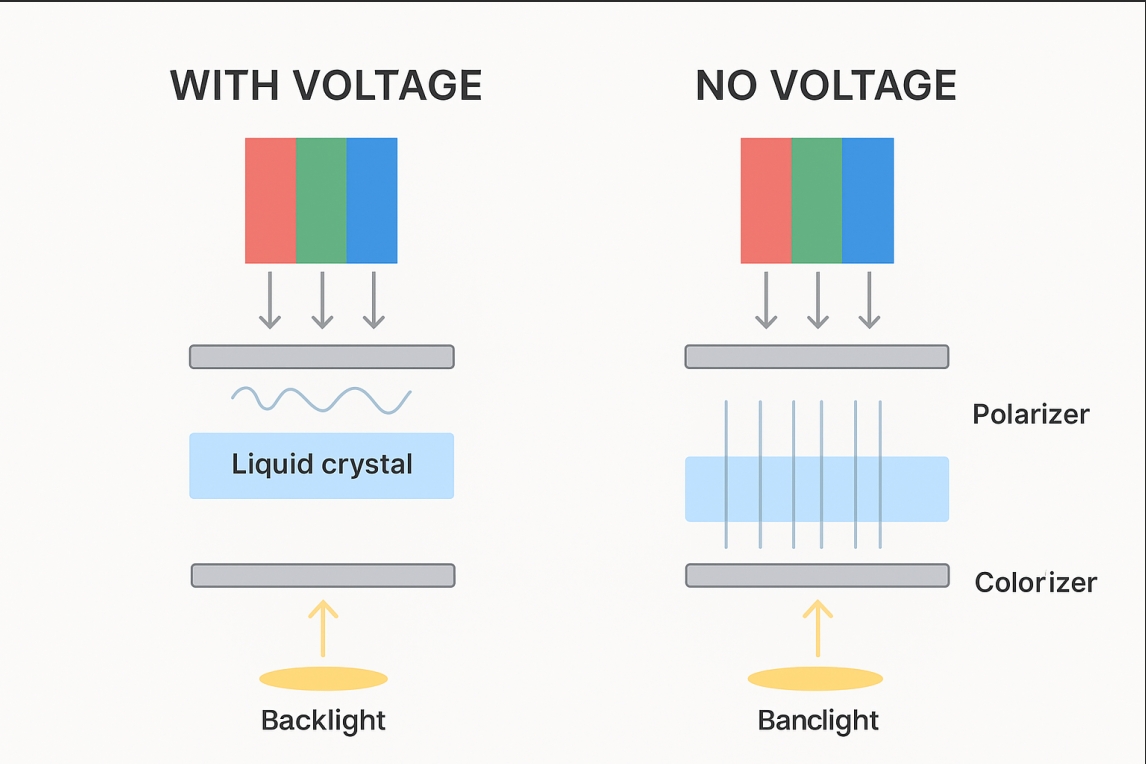
LCD (Liquid Crystal Display) technology works by controlling light using liquid crystals, polarizers, and a backlight — without generating light by itself. Here’s a clear step-by-step explanation of how it works:
1. Backlight Creation
Purpose: LCDs do not emit light, so a backlight (usually white LEDs) is used.
Structure: Light passes through optical films (diffuser, prism sheets) to make it uniform and directed toward the liquid crystal layer.
2. Polarization of Light
The rear polarizer allows only light waves oscillating in one direction to pass.
At this stage, light is uniformly polarized.
3. Liquid Crystal Control
Liquid crystal molecules can twist or align when voltage is applied.
Without voltage: molecules are twisted (e.g., 90°), rotating the light’s polarization as it travels through.
With voltage: molecules align straight, leaving the light’s polarization unchanged.
This twisting effect is key — it decides whether the next polarizer will block or pass the light.
4. Pixel-by-Pixel Switching
Each pixel has three subpixels (red, green, blue) with its own thin-film transistor (TFT) and liquid crystal cell.
Applying different voltages changes how much the liquid crystals twist → how much light passes.
This adjusts brightness levels for each subpixel.
5. Color Formation
The light passes through the color filter layer (RGB subpixels).
Different intensities of red, green, and blue combine to create millions of colors.
6. Final Light Output
The front polarizer works with the liquid crystal’s twisted polarization to either block light (dark pixel) or let it pass (bright pixel).
The viewer sees the resulting colored image.
In short:
Backlight → Polarizer → Liquid crystals twist/un-twist under voltage → Color filters → Second polarizer → Your eyes.
The magic is in the precise electrical control of the liquid crystals, which changes the polarization of light to form the desired image.
